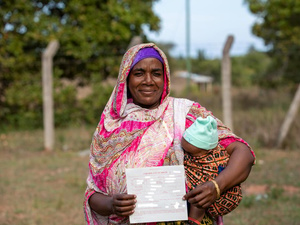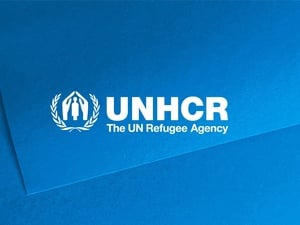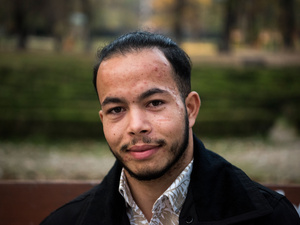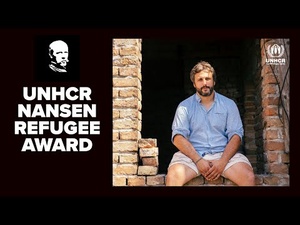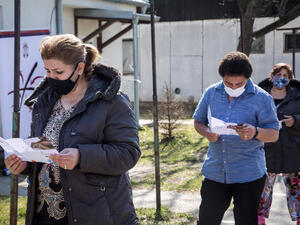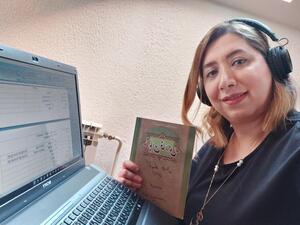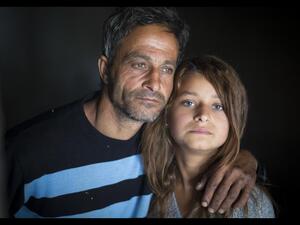Kosovo Crisis Update
Kosovo Crisis Update
Kosovo
Multi-agency convoys from Pristina have reached as far west as Pec one week after UNHCR re-established its presence in Kosovo, and plans are being drawn up to send urgently needed assistance by helicopter to areas inaccessible by road.
Eight trucks carrying supplies from various agencies reached Pec in western Kosovo on Sunday and another relief caravan is scheduled to proceed there on Monday. One six-truck convoy also went to Glogovac, the second during the week to the town 30 kilometres west of Pristina where around 20,000 internally displaced people have been reported.
Plans are also being made to bring a convoy for the first time to Podujevo since Yugoslav forces completed their departure from Kosovo over the weekend. An assessment team went to Podujevo on Saturday, just hours after the Yugoslav troops pulled out. More than two dozen villages in the Podujevo region along the strategic road between Pristina and Belgrade have not received assistance since fighting broke out there in December.
Since resuming operations in Kosovo a week ago, UNHCR has opened offices in Pristina, Prizren and Urosevac in southern Kosovo, and in Pec. Relief distribution is being carried out through the local charity Mother Theresa Society as well as expatriate NGOs working closely with UNHCR. Before the NATO action, Mother Teresa had a large network in Kosovo right down to the village level and had been UNHCR's main partner in the province. Rebuilding this relief network is a priority.
A number of distribution points in remote villages are to be opened soon and two or three helicopters will ferry aid to these areas. WFP is planning to reopen bakeries, most of them state owned.
Albania
Around 35,000 refugees returned from northern Albania to Kosovo over the weekend - 14,500 on Saturday and 20,500 on Sunday. Since 15 June, 90,500 Kosovars have returned through the Morini crossing in the border town of Kukes or through the crossing point at Qaf-e-Prushit. UNHCR discourages use of the Qaf-e-Prushit crossing point, owing to reports that the area is heavily mined.
Most of those going back were travelling in their own vehicles. UNHCR had estimated that up to half of the refugees in Albania and the FYR of Macedonia would go back in their cars or tractors, and these are proving to be the people in the first wave of returns.
A growing number of refugees are hiring taxis or minivans to take them back, or are being picked up by relatives. Now that the withdrawal of the Yugoslav security forces has been completed, UNHCR hopes to be able to begin organized returns to cities in southern and south-western Kosovo very soon.
The picture in the municipality of Kukes has changed dramatically in just a week. Seven days ago there were around 112,000 refugees in Kukes. Today there are fewer than 35,000, with less than 5,000 left in camps. A UNHCR survey of 8,000 returnees taken on one day at the Morini border crossing showed that 41 percent originated from Prizren, 31 percent from Suva Reka and 23 percent from Gora municipality.
FYR of Macedonia
Returns from the FYR of Macedonia have been steadily increasing. On Saturday, 12,700 Kosovars went back and on Sunday 14,800. So far, 49,500 refugees have returned from camps and host families in the FYR of Macedonia. There was also a stream of Kosovars mostly men, coming back across the border over the weekend to pick up their families, after having made an exploratory trip home.
The supply pipeline from Skopje to Pristina continues. Over the weekend, a multi-agency convoy of 17 trucks delivered food and non-food items to Pristina.
Republic of Montenegro
UNHCR is discussing with authorities in Belgrade demands by Kosovar refugees for safe passage to Kosovo through Yugoslav military checkpoints along the road to the border.
The primary destination of the would-be returnees is Pec, but a significant number also want to go back to Kosovska Mitrovica and Istok in northern Kosovo. Kosovska Mitrovica was heavily damaged during the war and the region remains tense, according to a preliminary report by a UNHCR team.
Kosovo Serbs who left the province last week for Montenegro claim to have made arrangements with the Italian contingent of KFOR, the international security force in Kosovo, to return. UNHCR is concerned about Kosovo Serbs and Albanians possibly heading back into Kosovo along the same road at the same time.
Serbia
UNHCR sent 140 metric tons of aid on Saturday to ten different municipalities in central Serbia to aid an estimated 50,000 Serb displaced people from Kosovo. UNHCR field teams visited areas of central Serbia on the weekend to assess the situation of the Serbs displaced from Kosovo. The assessment covered 20 municipalities, the main ones being Kraljevo, Kragujevac, Cuprija, Krusevac, Nis, Prokuplje, Kursumlija, Smederevo, Novi Pazar, Prijepolje, Cacak and Uzice. In the municipalities, UNHCR staff spoke to the Yugoslav Red Cross, the crisis committees, local authorities and the displaced people themselves.
The general picture is a grim one. The municipalities with the largest concentrations of displaced people are Kraljevo, Nis and Kragujevac - areas where unemployment is very high, food stocks low and accommodation for the displaced virtually non-existent. The numbers are not known with accuracy, but at least 50,000 have arrived in or transited through this part of Serbia.
UNHCR-IOM Humanitarian Evacuation Programme
Only 46 refugees from the FYR of Macedonia departed on Sunday for Canada under the humanitarian evacuation programme of UNHCR and the International Organization for Migration. The total departures so far is 88,154.


